Classroom behavior can be challenging to navigate. It can be so hard to detach yourself emotionally when a child is in crisis. But the truth is, the only classroom behavior you can completely control is your own. You have probably heard the phrase, “an escalated adult cannot de-escalate an escalated child”. There is truth to that. Where are YOU at emotionally during de-escalation with a student? The next time you are trying to support a child who is in crisis, do a quick self-check on these five things.
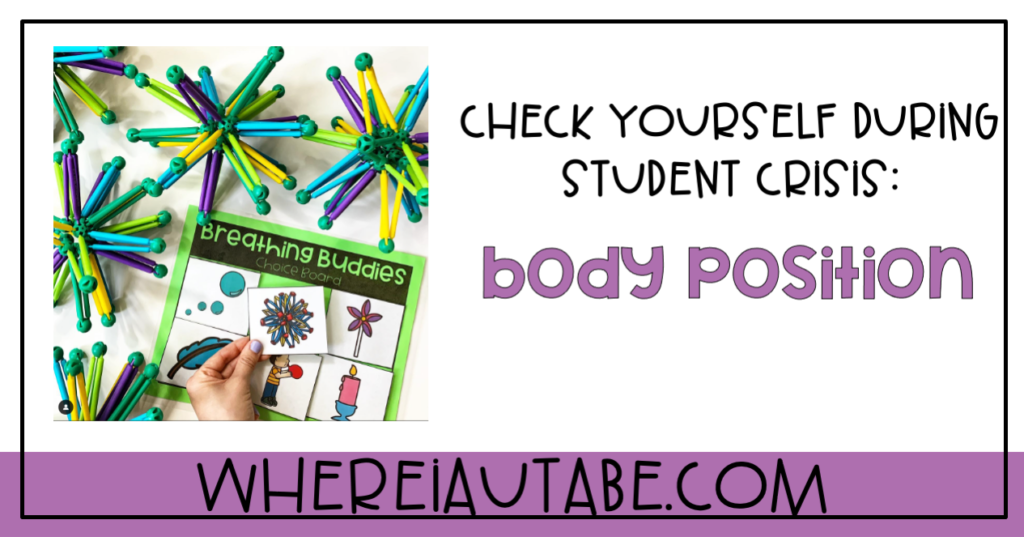
Body Position
Did you know body position matters? I try to use a Supportive Stance which I learned from a CPI training. Supportive Stance is when you turn your body to a 45 degree angle as opposed to directly in front of a student. A supportive stance is less threatening and feels less confrontational in the event of a crisis.
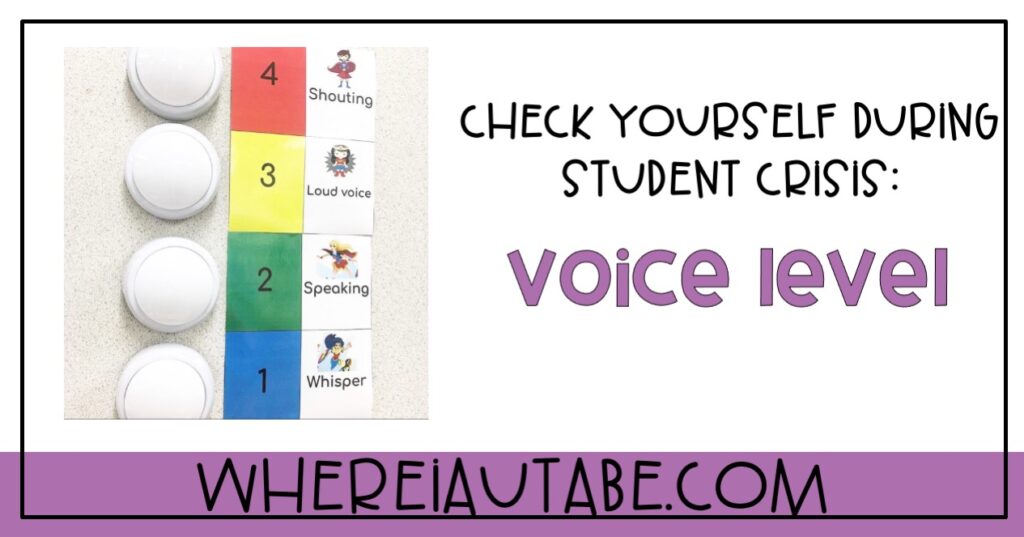
Voice Level
Check your voice level and inflection. Are you yelling? Does your voice sound irritated and frustrated or is it calm, clear, supportive?
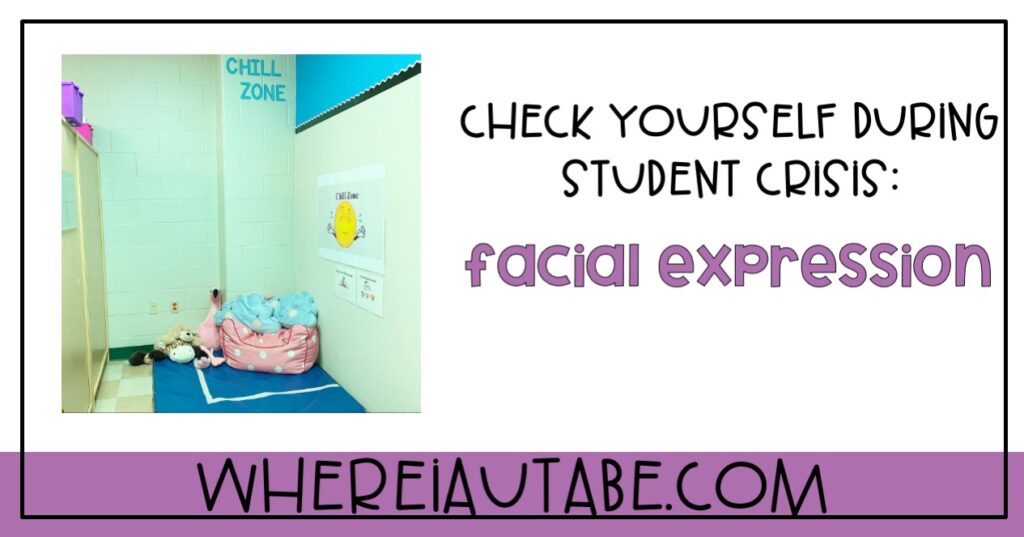
Facial Expression
Your face can hold a lot of tension. Especially when experiencing frequent classroom behavior. Be aware of what facial expressions you have. Even during fight or flight moments, kids are still internalizing what you are doing during a crisis. They can read a face that is offering support and love versus one that is displaying irritability and judgment.
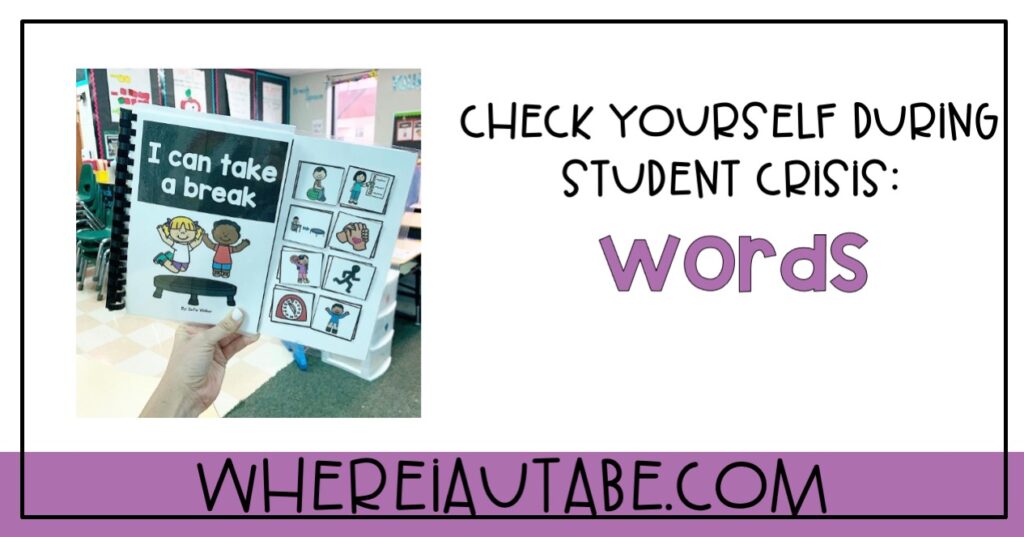
Words
This can be different for each student based on preference. Using too many words during a crisis can be overwhelming. In some cases it is better to say nothing at all. There are alternative ways to show support that are mentioned above. Another thing to consider is not using enough words. Depending on the student, a lack of words could also be overwhelming. Some people do prefer conversing in order to feel more supported.
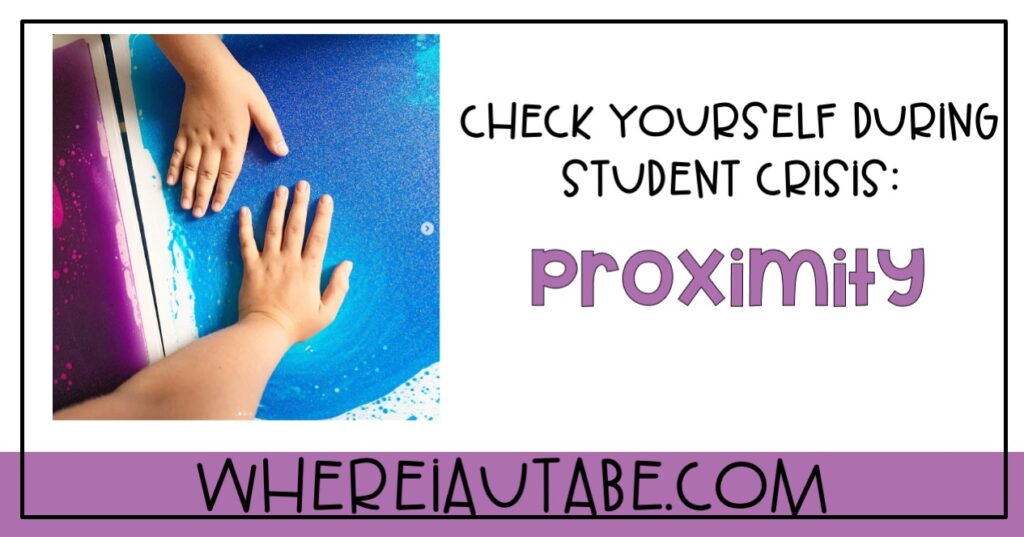
Proximity
Be mindful of personal space. Again, student preference above all else here but consider that some students will want complete personal space and some will want closer proximity for support.
I hope reading this was helpful to you. The more aware we are of our own selves, the better we can help our students during a crisis. Tap out if you need to and don’t forget to use the support staff in your room to better support those classroom behaviors. Always remember that each child is different and what works for one may not work for another. We all have unique needs during high stress and high feelings situations. But regardless, classroom behavior should always be met with love, compassion, and respect.
If you enjoyed reading these tips about classroom behavior, be sure to check out my other behavior related blogs.
Happy teaching,
Sofie








